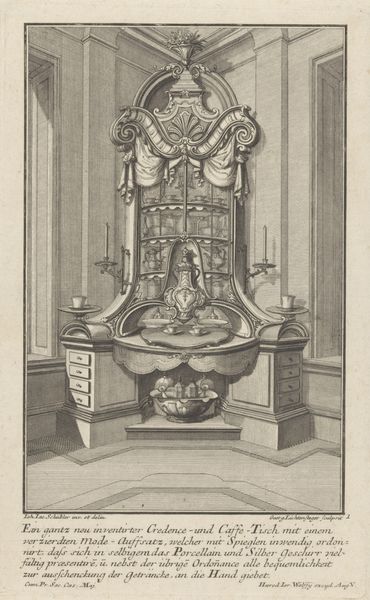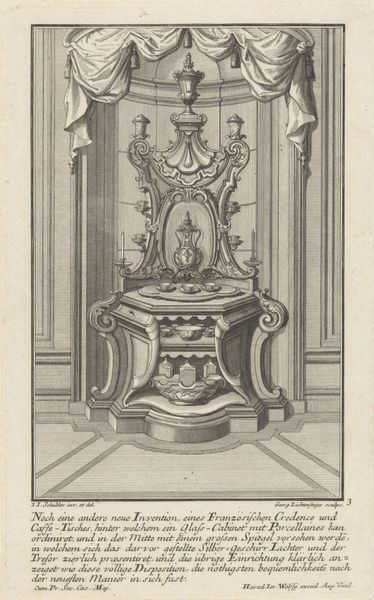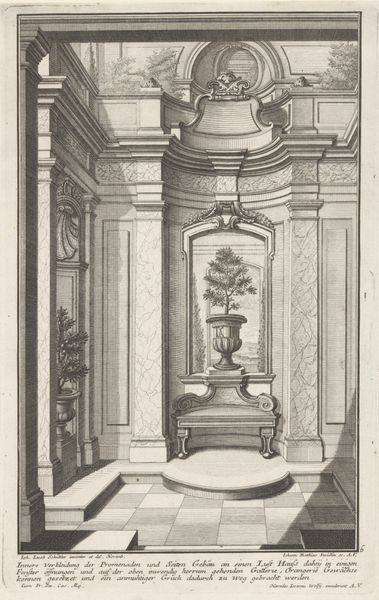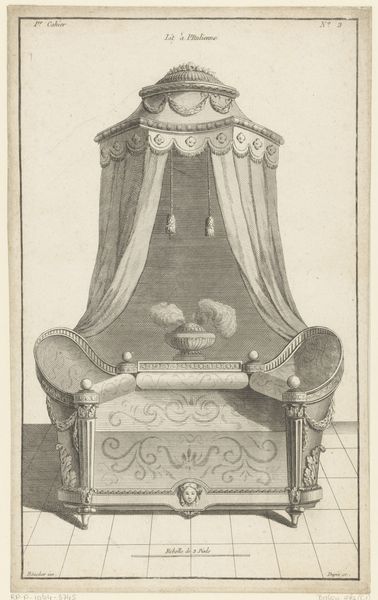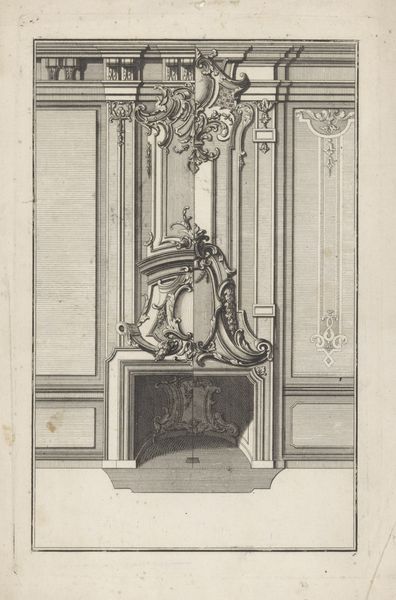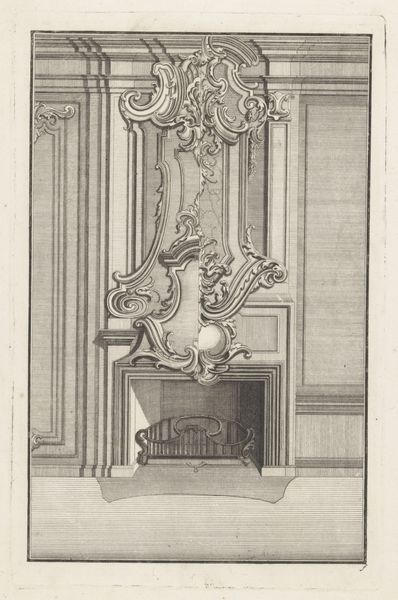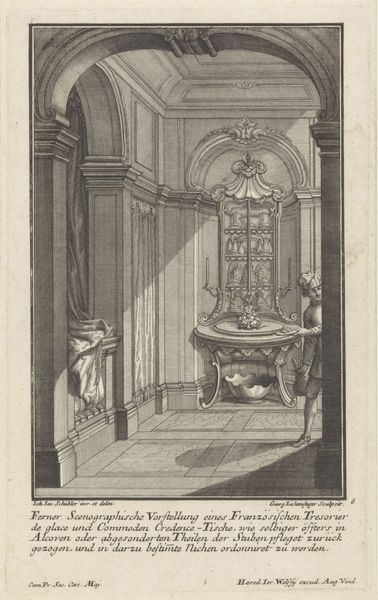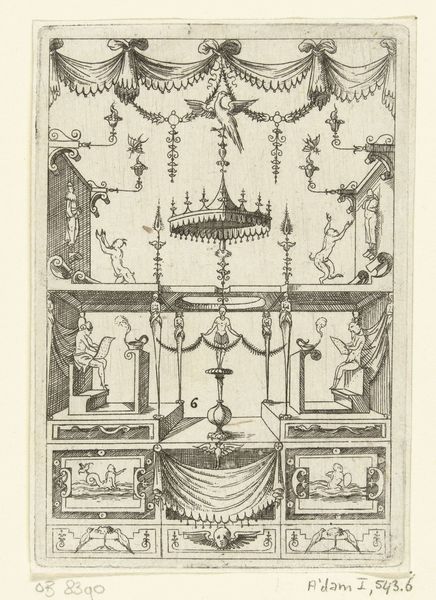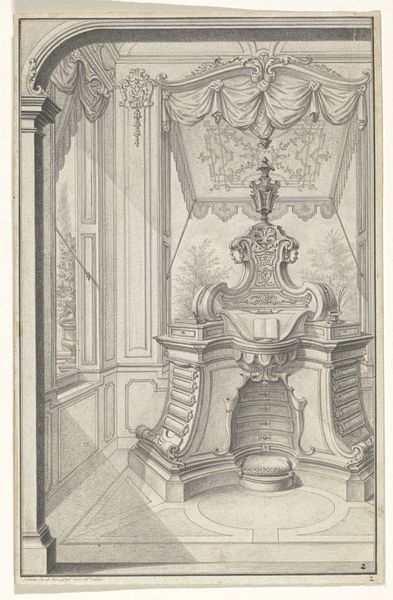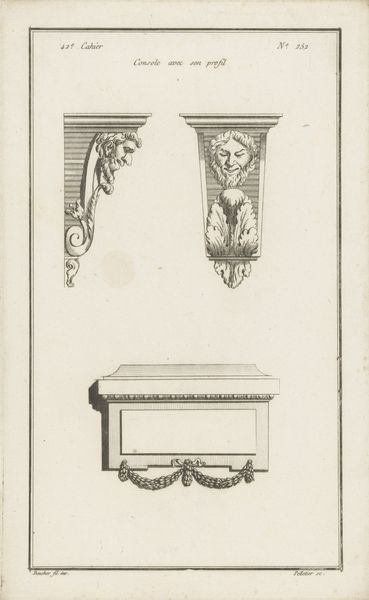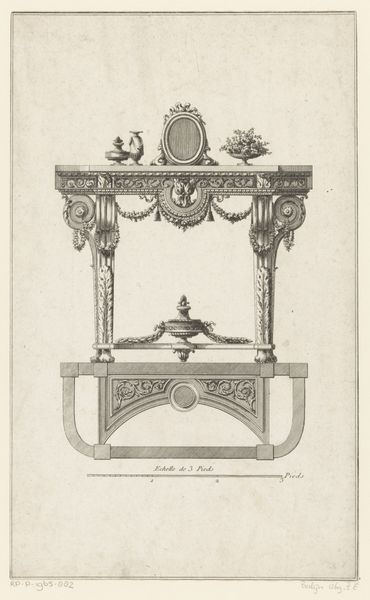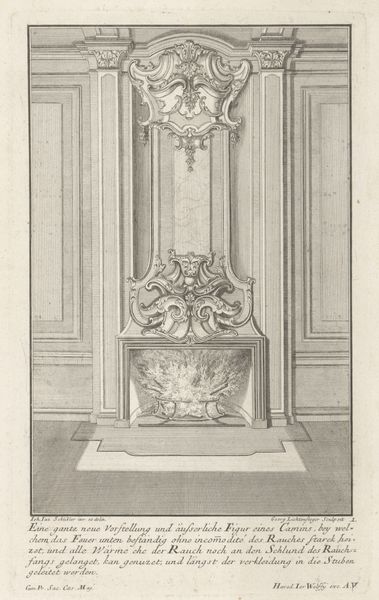
drawing, print, engraving, architecture
#
drawing
#
baroque
# print
#
pencil sketch
#
old engraving style
#
form
#
line
#
decorative-art
#
engraving
#
architecture
Dimensions: height 281 mm, width 176 mm
Copyright: Rijks Museum: Open Domain
Curator: I'm immediately struck by the formality of this scene, a static, staged interior lacking human presence yet vibrating with a certain social anxiety. Editor: Exactly. Let’s introduce our listeners to this image. What we are looking at is an engraving created by Georg Lichtensteger, dating from after 1724, called "Credens voor nis met servies," housed here at the Rijksmuseum. It showcases a credenza, or serving table, set within an alcove. Curator: A piece that vividly embodies the aspirations—and the constraints—of its era. The meticulous lines highlight the emphasis on structure characteristic of Baroque art, reflecting a desire for order during the dawn of modern centralized states. Editor: And those elaborate curves, the swirling ornamentation – they echo the dominant visual rhetoric of power and aristocratic taste during the period. The arrangement of dishware hints at more than just domestic function; they are symbols. Consider, the height of such sideboards and cabinets in Europe which grew increasingly elaborate and started presenting sugar sculptures along with silverware services in domestic settings. Curator: Absolutely. This image represents much more than an interior. The material displays within, rendered meticulously, showcase both wealth and a rigid social hierarchy dictating its performance, further emphasizing the politics embedded in decor and consumption. This ostentatious aesthetic becomes a marker of social distinction. Editor: Yes, and those porcelain pieces themselves signify an engagement with global trade routes, revealing the entanglement of even private, domestic spaces with the larger machinery of commerce and exchange. It’s not just decoration; it tells the history of the relationship between decorative forms and growing colonial connections across different places and cultures. Curator: But despite its intricacy and polish, I feel a sense of melancholy permeating the space, amplified by its rather rigid and artificial look. The symmetry feels suffocating rather than harmonious. Editor: A suitable response, because after examining the artist’s intricate arrangement, I get an idea about Lichtensteger’s worldview, of art having function and a relationship to wealth. Curator: Overall, the engraving allows us to examine and discuss power, display, and societal stratification. Editor: Yes, by decoding Lichtensteger's image, the symbols in front of us lead to questions that transcend beyond artistic interpretation.
Comments
No comments
Be the first to comment and join the conversation on the ultimate creative platform.
